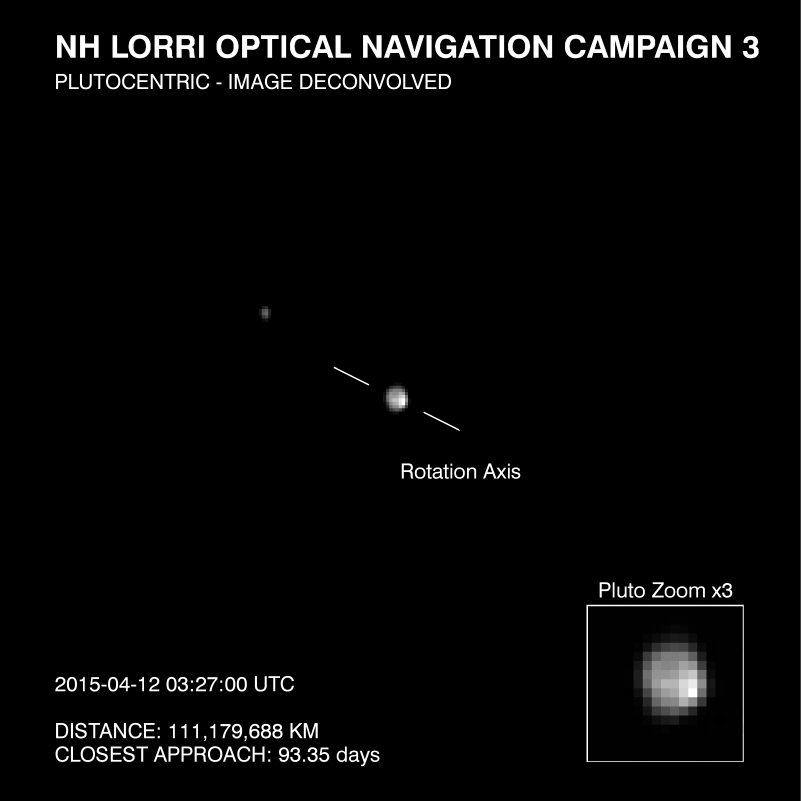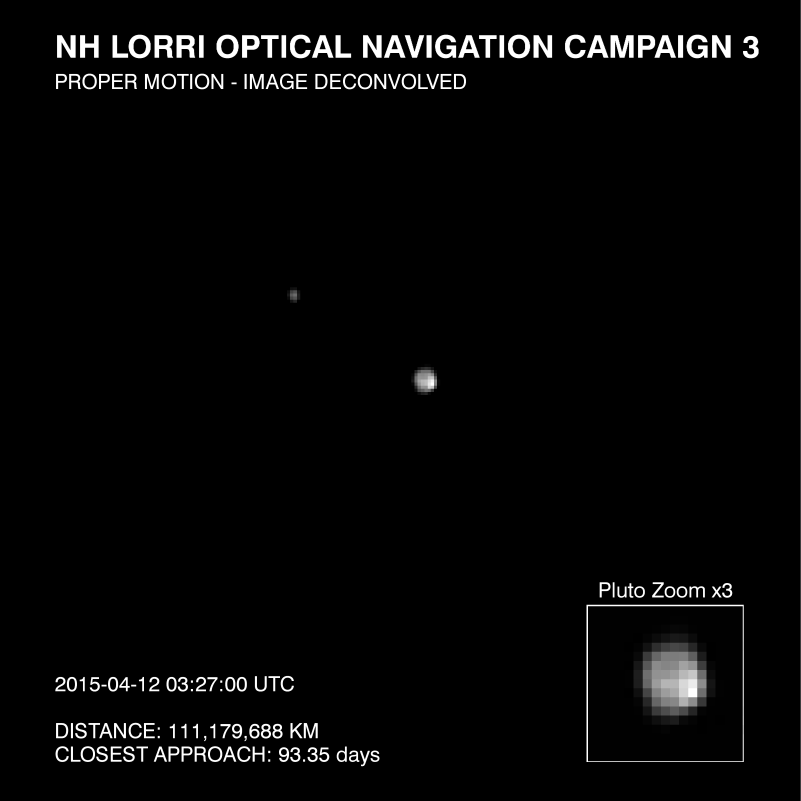Press Release
NASA’s New Horizons Detects Surface Features, Possible Polar Cap on Pluto
Wed, 04/29/2015 - 12:55
For the first time, images from NASA’s New Horizons spacecraft are revealing bright and dark regions on the surface of faraway Pluto — the primary target of the New Horizons close flyby in mid-July.
The images were captured in early to mid-April from within 70 million miles (113 million kilometers), using the telescopic Long Range Reconnaissance Imager (LORRI) camera on New Horizons. A technique called image deconvolution sharpens the raw, unprocessed images beamed back to Earth. New Horizons scientists interpreted the data to reveal the dwarf planet has broad surface markings — some bright, some dark — including a bright area at one pole that may be a polar cap.
“As we approach the Pluto system we are starting to see intriguing features such as a bright region near Pluto’s visible pole, starting the great scientific adventure to understand this enigmatic celestial object,” says John Grunsfeld, associate administrator for NASA’s Science Mission Directorate in Washington. “As we get closer, the excitement is building in our quest to unravel the mysteries of Pluto using data from New Horizons."
View the graphics from the April 29 media telecon.
Also captured in the images is Pluto’s largest moon, Charon, rotating in its 6.4-day-long orbit. The exposure times used to create this image set — a tenth of a second — were too short for the camera to detect Pluto’s four much smaller and fainter moons.

